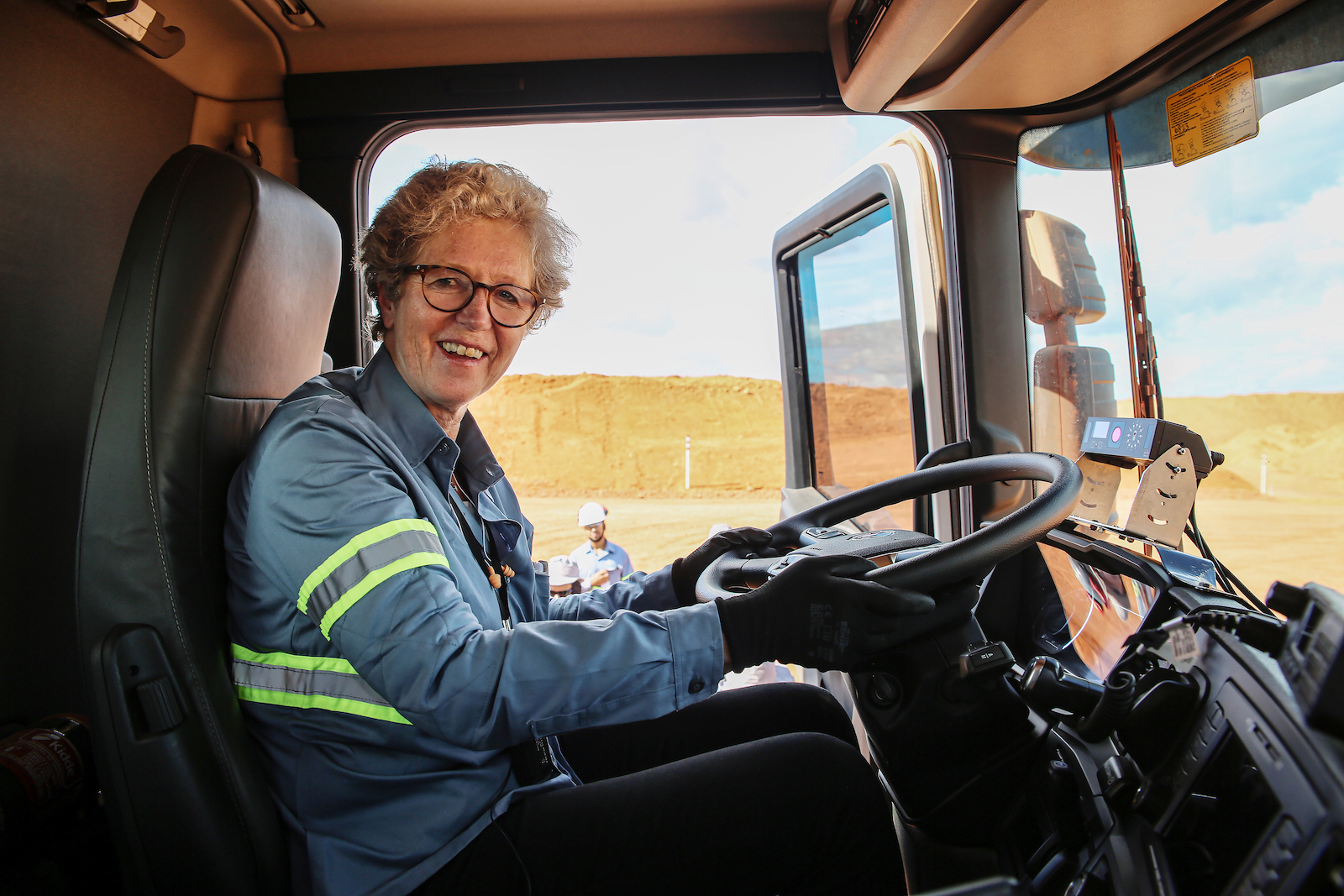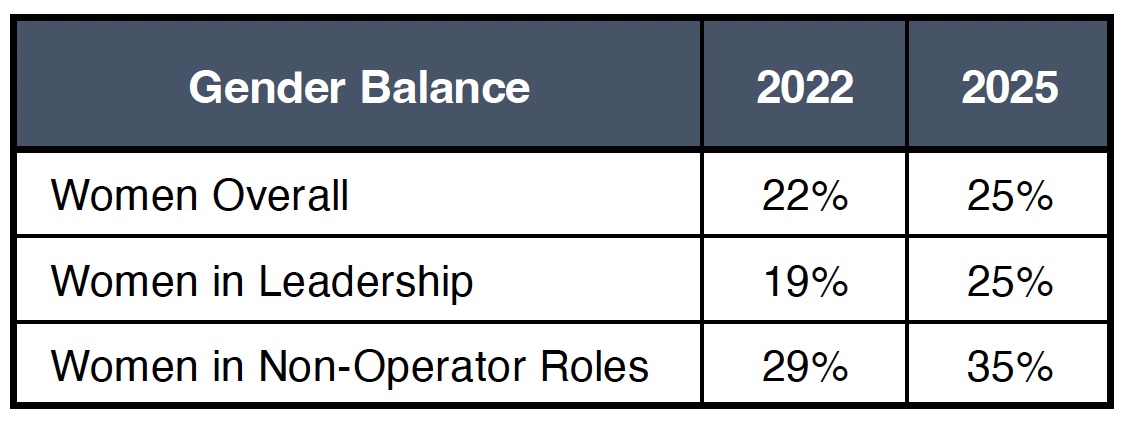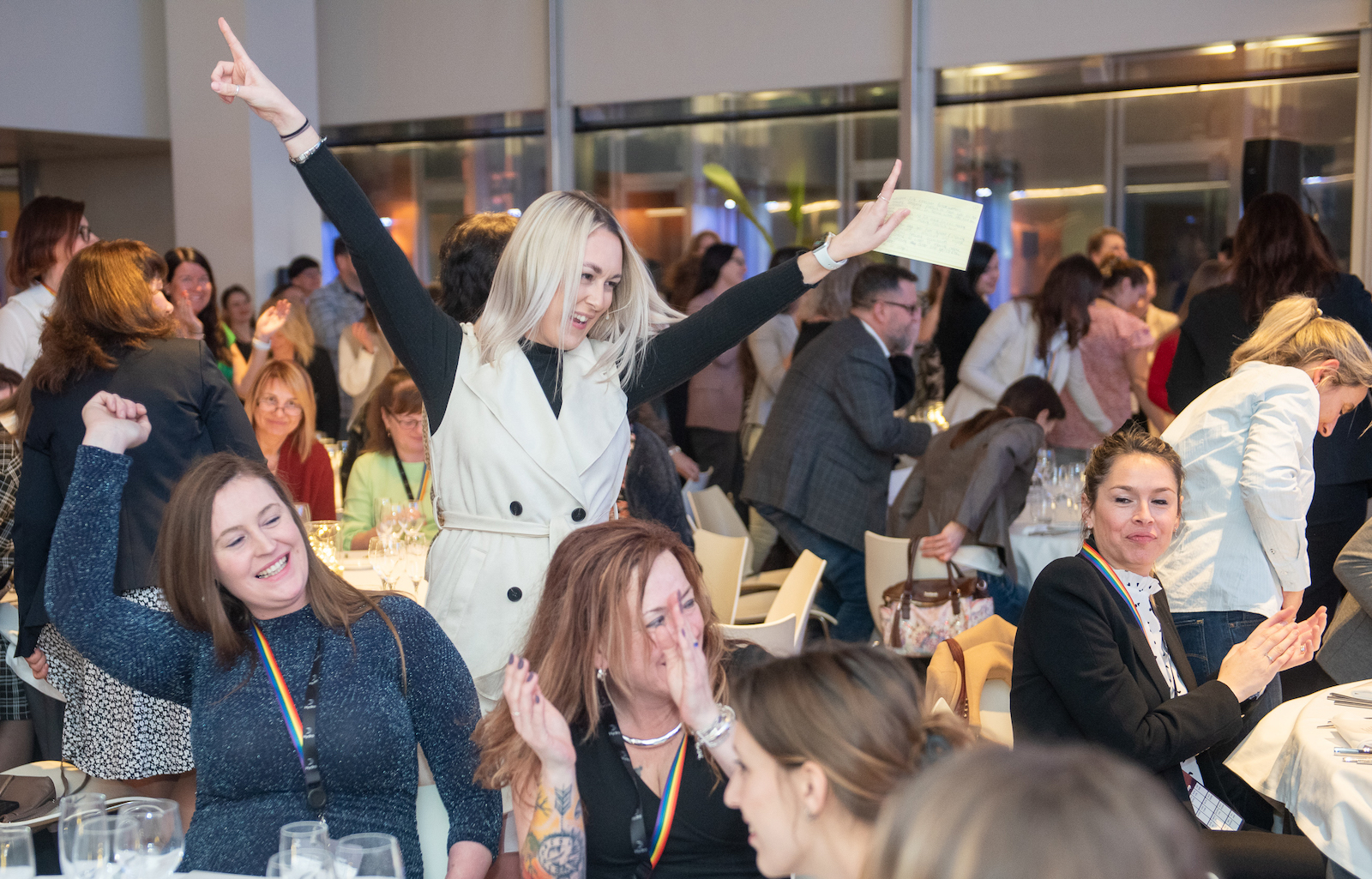By Kevin Widlic, Contributing Editor.
Hydro believes it is going to see a dramatic shift in its employee base over the next five years, with 25,000 new employees entering the company. Some of these new employees will join through acquisitions in support of future growth, while others will be through recruitment. Of these, a higher percentage than before are going to be women—a challenge for an industrial company and an industry in which the large share of positions are typically held by men.
In order to better understand the status of its current and future employment efforts, Hydro conducted an analysis of its business, looking at a range of numbers to better understand the full picture moving forward. Expected retirements and employee turnover were among the figures examined. The company also considered the impact of automation and robotization, as well as new business growth.
In the area of retirements, Hydro believes it is likely that nearly 4,000 employees will be leaving the company over the next five years. This represents slightly more than 12% of the current workforce.
Employee turnover is another interesting area. In the U.S., for instance, the company’s employee turnover is considerably higher than it is in Europe, indicating that turnover is driven more by culture and geography than business structure. Increased automation and robotization, not only in production, but also through greater efficiency in back-office functions, is also impacting turnover.
Based on this analysis, Hydro estimates that, at the current rate of turnover regardless of geography, it will lose an equivalent for 90% of today’s production operators across the world by 2026—and slightly more than half of its office workers. Estimating that its overall employee turnover rate will continue at around 15%, that retirements will remain at the same pace, and that it will require new employees for its growing businesses, Hydro believes that 25,000 new people will be entering the company from 2023 to 2027. Hydro employs more than 30,000 people today. The company also knows its challenge is not unique. In other words, that it will be battling other aluminum companies for the same people.
Focusing on Diversity and Inclusion
Increased diversity is one of the key solutions with regard to recruitment. And like many other companies, Hydro sees diverse and inclusive teams as a path toward higher levels of innovation, an improved learning culture, better customer understanding and cultural awareness, and greater financial results. It also makes for a better place to work.
“We need creativity to succeed,” said Hilde Merete Aasheim (Figure 1), president and chief executive officer of Hydro. “We need diversity to give diverse perspectives so Hydro can move to the top of the ranks.”

As a driver, Hydro has built a strategic process around three pillars: diversity, equity, and inclusion. Diversity consists of seeking out multiple perspectives and competencies when solving tasks and meeting customer needs. This involves increasing relevant diversity across seniority levels, including an improved gender balance. Equity consists of promoting equitable opportunities for everyone to thrive, contribute, and succeed, while adjusting for the fact that different individuals have different starting points. Inclusion involves fostering inclusive leadership and an inclusive culture for all employees, enabling them to contribute with their full potential.
Shifting the Balance
Gender balance is part of Hydro’s diversity strategy. Since 1997, when the company adopted its first action plan to promote women employees and leaders, and this work has succeeded, to a certain degree. Its gender balance has improved in staff positions, less so in production operator and leadership positions.
Consequently, as part of its effort to recruit and retain women, Hydro has begun diving deeper into the issues. In 2021, it began reporting on compensation-related differences between men and women based on the requirements in the Norwegian Equality and Anti-Discrimination Act. The company followed up by expanding its compensation reporting to identify pay gaps, increase transparency, and improve fairness.
Still, more was needed—specifically, a clear target. “What gets measured, gets done” has long been one of the mantras for Aasheim and for Hydro as a company. This simple phrase led the company in 2022 to put a number on its gender balance target. Its aim: Have at least 25% women employees, covering both permanent and temporary positions, by the end of 2025 (Table I).

A report from Ernst & Young Global Ltd. showed that, in 2022, women accounted for about 12% of the global mining and metals workforce—no great surprise to anyone working in the industry. “The image is that the jobs are strenuous and that you have to be strong, that it is a man’s world,” said Ruby Hines, a production control process leader at Hydro’s aluminum extrusion plant in Elkhart, IN.
Improvement is already occurring. Hydro’s share of women employees was 22% at the end of 2022, compared with 20% at the end of the previous year. The percentage of women in management levels rose similarly over the same period.
In countries where Hydro has more than 1,000 permanent and temporary employees, the largest share of women is in Hungary. Women accounted for 32% of its 1,726-person workforce at the end of 2022. Norway has also seen significant improvement. Measured in raw numbers, Hydro employs more women in Norway than in any other country.
Supporting Growth
Work/life balance is an aspiration that appears to be common among women employees regardless of geography. In a survey of more than 3,000 colleagues, Hydro found that men and women are aligned with the six elements on which they place the most value. However, there was a slight difference in the order of these elements, with women putting work/life balance first, while men prioritized compensation.
Hydro Extrusions, the world’s largest global aluminum extrusion business, accounts for nearly two-thirds of the employees within the Hydro group. If Hydro is to meet its 25% target, then Extrusions has to contribute, especially on the grassroots level. Women leaders in its two largest business units, Extrusion Europe and Extrusion North America, recently established support networks for their female colleagues. These initiatives are the EE Women’s Network in Europe (Figure 2) and the employee resource group RISE in North America.

“Our ambition is fostering a culture where women are respected, included, supported, and empowered through promoting recognition, education, growth, and community,” said Leigh Darrah, senior internal communications manager at Hydro Extrusions North America and one of the drivers behind RISE. Similarly, the main topics of interest among the EE Women’s Network include women’s leadership styles, ways of handling workplace bias, mentoring, increased professional branding that targets women, and support with work/life balance.
Beatrix Hudak, who is responsible for finance and strategy for Extrusion Europe, which employs some 9,000 people across the continent, said she started the EE Women’s Network to help make her female colleagues feel more secure and to empower them, wherever they might be in the organization.
“I would say the goal of the network is care—women for other women—to make the workplace better, and to see how we can attract more females to production roles and to functions where we have a lower percentage of women, such as engineering or external sales or even controlling,” said Hudak. “I believe in the whole aspect of diversity—in nationality, age, gender, backgrounds, disabilities, and so on. The reason is because it’s proven that teams with diversity make better decisions. I also feel we can do much more on gender diversity, partly because we see a shortage of talent in the market, and we cannot afford to ignore half the talent pool.”
From the Top Down
Hilde Merete Aasheim has worked in the aluminum industry since 1986, when she got her start with the Norwegian company Elkem. Equipped with a master’s degree in business administration and strong leadership skills, she rose steadily within the company before leaving to join Hydro in 2005. In May 2019, Aasheim took over as president and CEO of Hydro, becoming the first woman to lead the company since it was founded in 1905. She also represents Hydro on the International Council on Mining and Metals (ICMM) and is an invitation-only member of the European Round Table for Industry.
“When I travel around the company, I always try to invite myself to women’s networks to have a dialogue with women about how we can make them thrive even more in the company. We firmly believe that women’s contributions are essential to our success, and we are committed to creating an environment where women can thrive and grow within the company,” said Aasheim. “I believe in people leadership. Again, this comes back to inclusion and belonging, where we as leaders make people feel they have a voice at the table. We want people to feel good about coming to work at Hydro.”
Aasheim leads Hydro’s ten-person corporate management team, of which four are women. Four of the 11 members of the company’s board of directors are also women. This is valuable, noted Hudak, recalling her very first job interview with Hydro. It was in Switzerland, and the HR professional who interviewed her—a woman—left a lasting impression. “This was a woman leader who had a career with interesting jobs all over the world,” she said. “I had never met anyone like that before. And I thought: This is what I want.”
Since then, Hudak has worked in key roles for the company in Germany, China, and Norway. “Young talents, especially female young talents, often tell me they really like that our CEO is a woman, because it shows that the company values gender diversity and that we have the opportunity to get to the top, if this is something we want,” said Hudak. “And I agree. We have the opportunity.”
One of her colleagues, Bre Brittain, is a press operator at Hydro’s extrusion plant in Elkhart, IN. The plant started production 47 years ago, and she is one of two women press operators the plant has had since then. She also appreciates what she sees as an opportunity to grow. “I want to see more females cross that line. I want them to know that it’s going to be okay. Don’t hold yourself back,” said Brittain. “I want to make an impact and challenge the male-dominated industry. I am going to keep moving forward and striving, and I don’t know where I’m going to end up.”
Editor’s Note: This article first appeared in the January 2024 issue of Light Metal Age. To receive the current issue, please subscribe.
